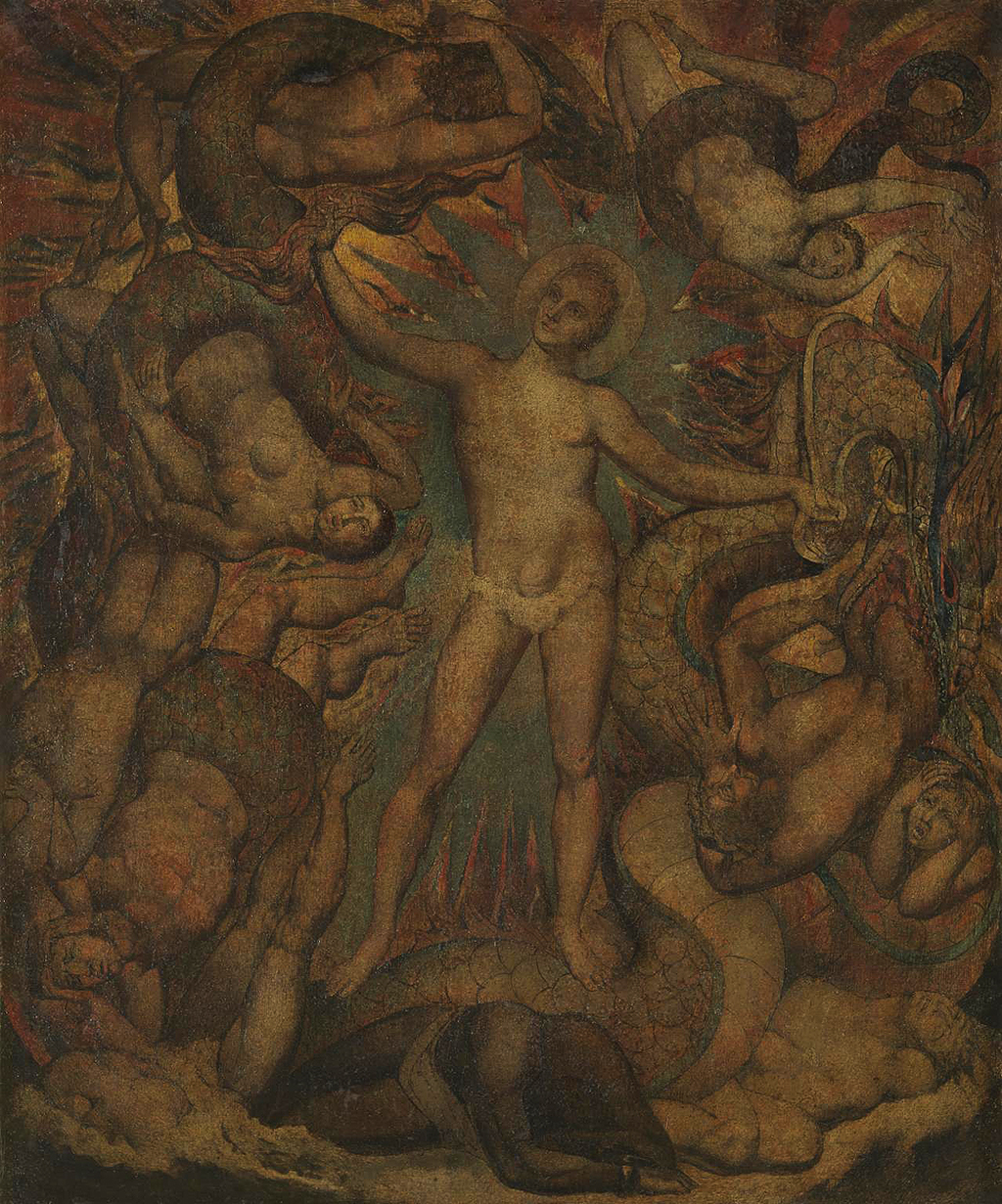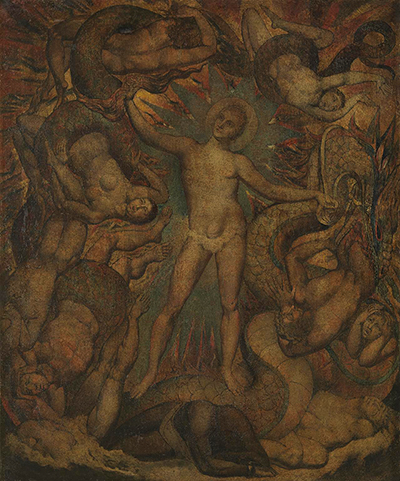The Spiritual Form of Nelson Guiding Leviathan is a well known artwork by William Blake which is loosely dated at around 1805–9. It was produced using the traditional techniques of tempera, a method common during the Italian Renaissance.
Here we discover a complex arrangements of figures, all intertwined together. A single young man stands in the centre of the composition, immediately grabbing our attention. There is then a number of other people wrapped in the environment, at different angles and postures. There was also a related painting by William Blake, titled The Spiritual Form of Pitt Guiding Behemoth, though that is even darker in contrast than this one, making its detail even harder to make out. In order to better understand the content, we must look for the meaning behind these figures. The artist chose to capture Pitt and Nelson within mythological worlds, drawing together the present day with his fantasy worlds of the past. Literature and reality are also drawn together here. In this piece we find war hero Nelson attempting to control a wild serpent which is causing terror and chaos. He appears calm and as light appears from behind, it is as if he has been transformed into a biblical character.
When most art historians think of tempera, they immediately recall the various stages of the Italian Renaissance. Madonna and Child by Duccio provides an early example of how ground gold could be used in conjunction with egg tempera to produce exceptional results even before the Renaissance had begun. There were then the enchanting frescoes produced by the likes of Michelangelo who himself put together a whole series of artworks across the Sistine Chapel ceiling, with the aid of a number of assistants. The influence of North Europeans would ultimately see tastes switch to the use of oils, but many centuries later we find Blake returning to these traditional techniques as a means of experimentation, and perhaps a desire to create something that looked and felt older than it was, matching the content which he was capturing.
The artwork found here, a relatively rare tempera piece by William Blake, is one of a number of items from his career which now reside within the collection of the Tate art institution within is based in the UK. It is specifically the Tate Britain which handles most of the work from before the 20th century, and therefore Blake can be found here alongside a number of highly relevant artists. The focus initially was to collect British art but eventually this was widened to now feature a good number of other artists, with Europe and the US being particularly well covered. Donations continue to expand the collection of an annual basis and there are even charitable bodies from outside of the UK who continue to support these important galleries, perhaps from members who once resided within the country themselves.





